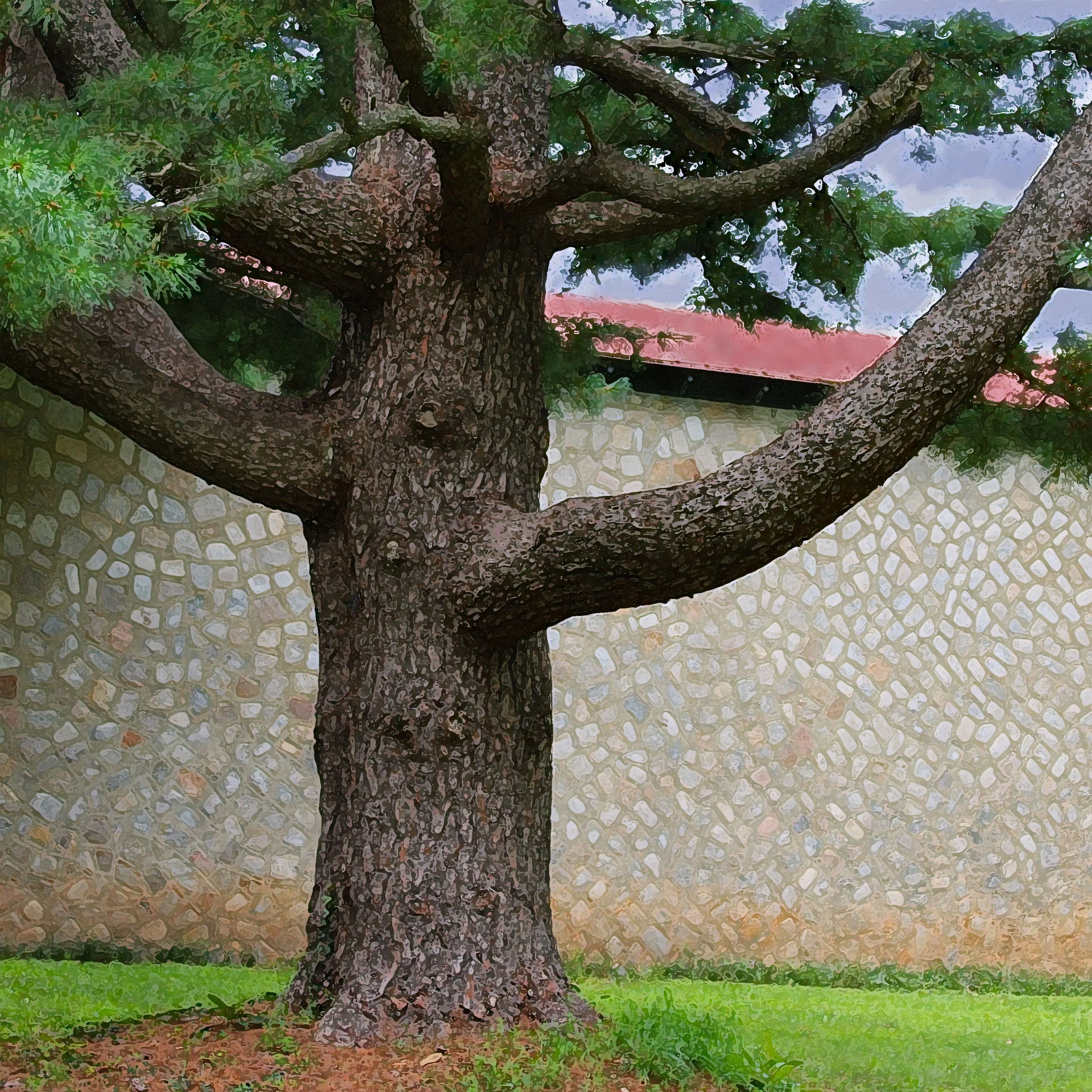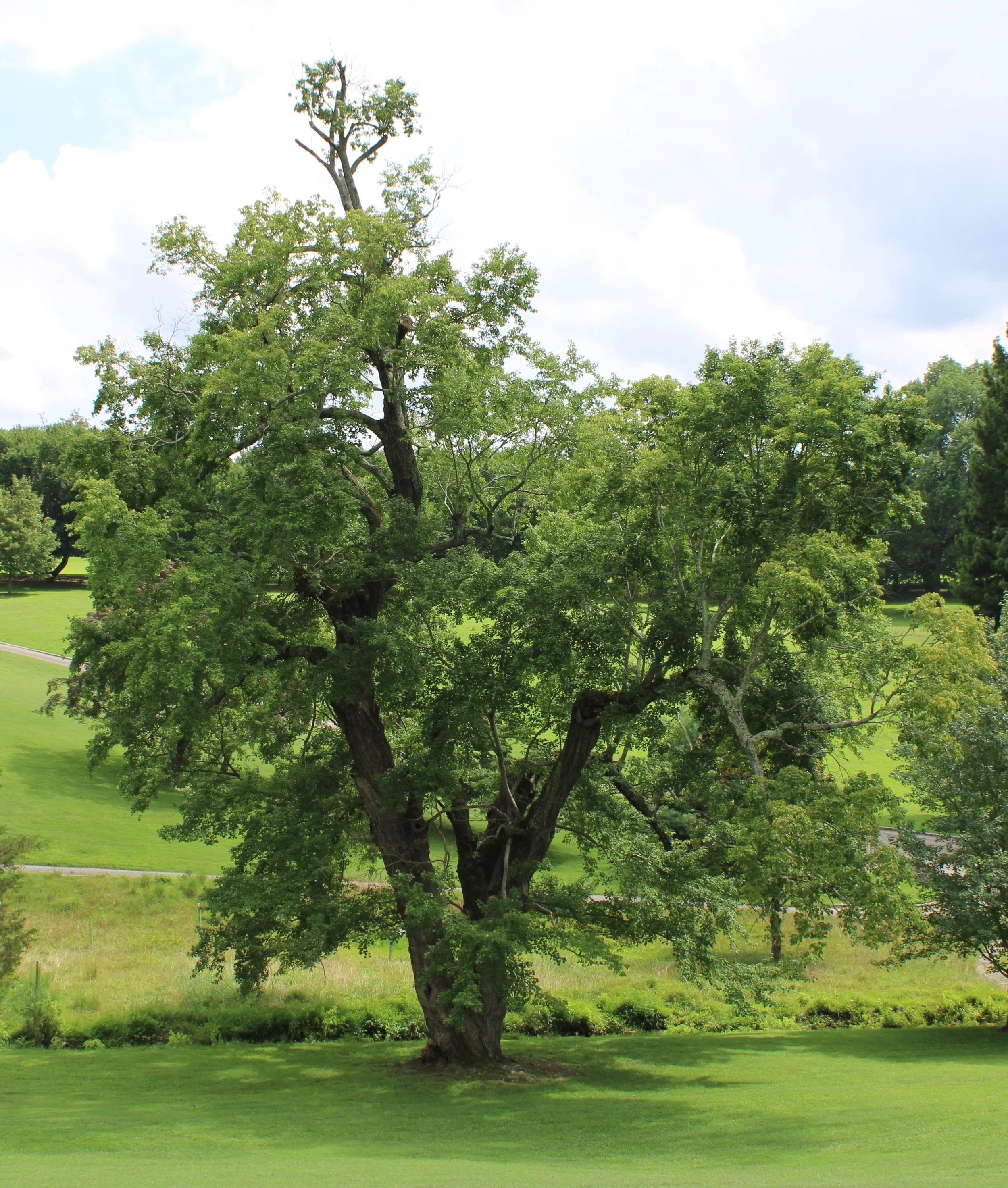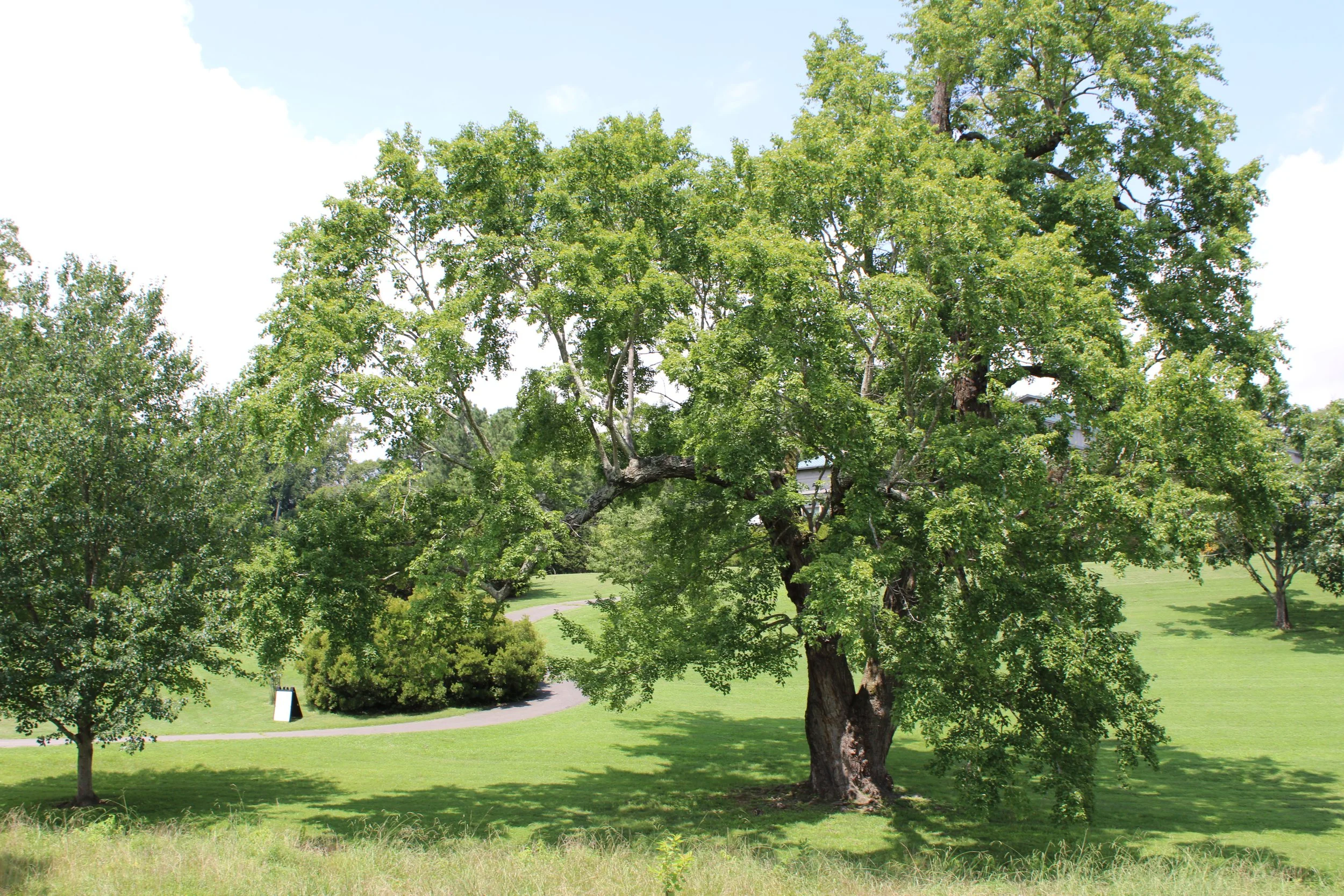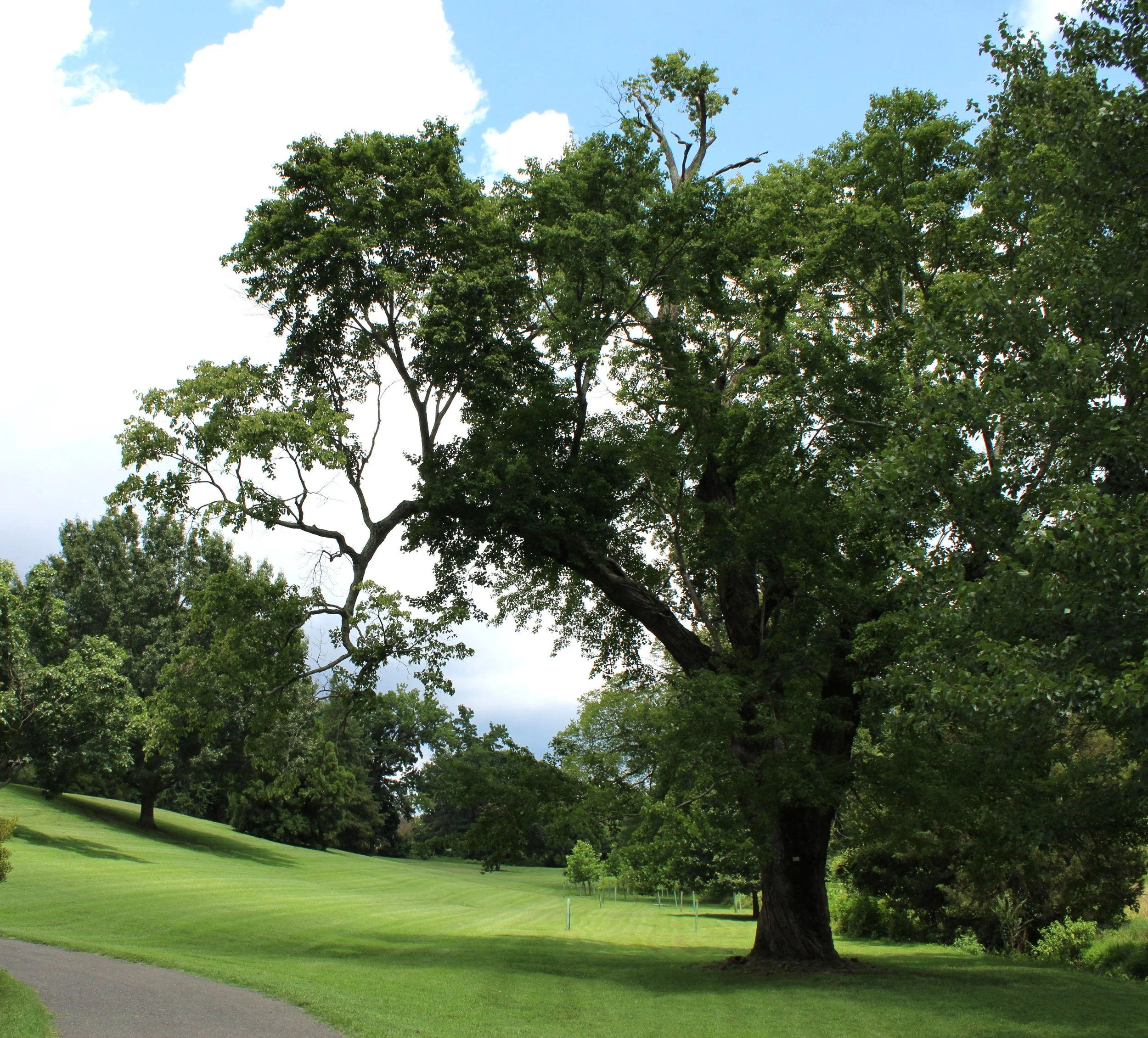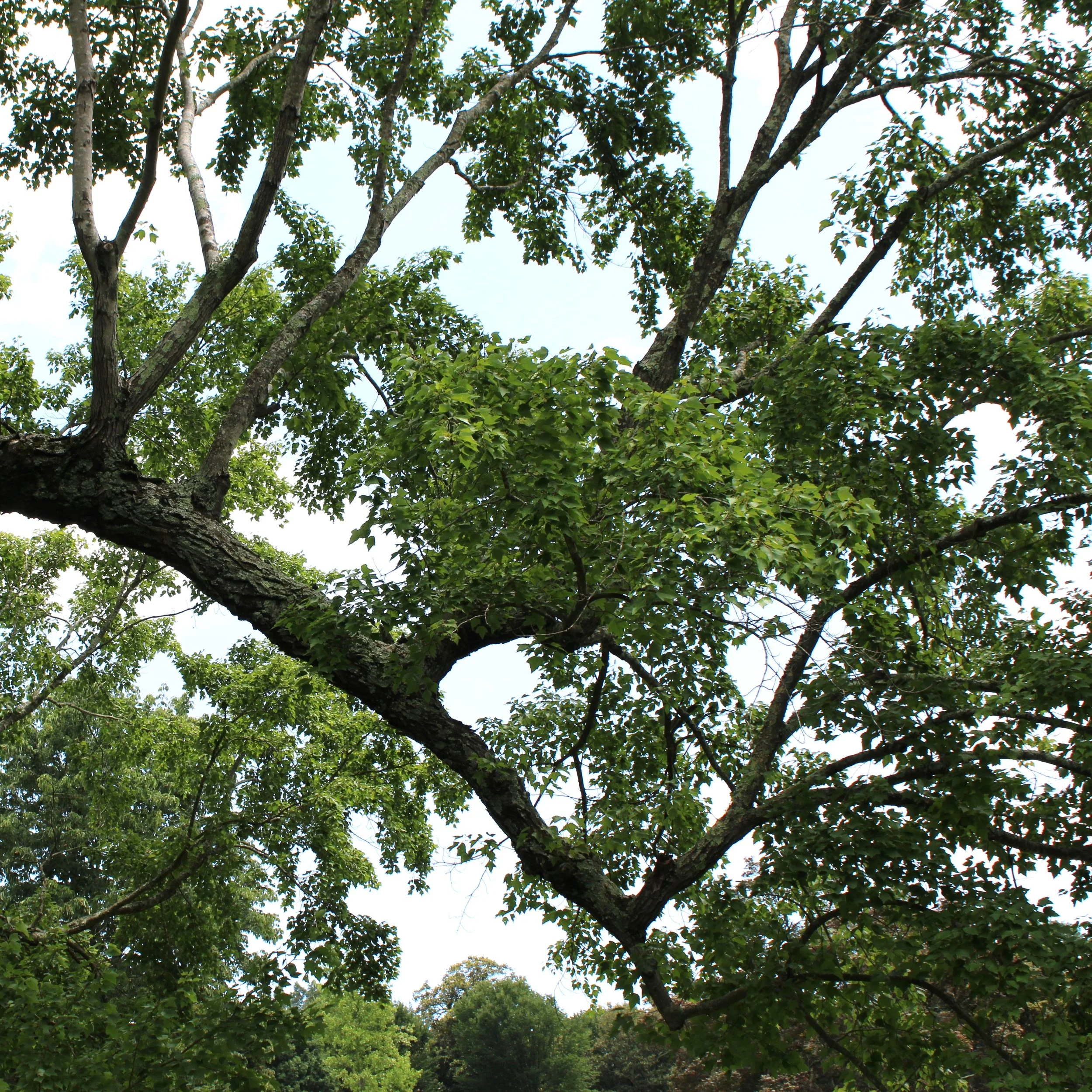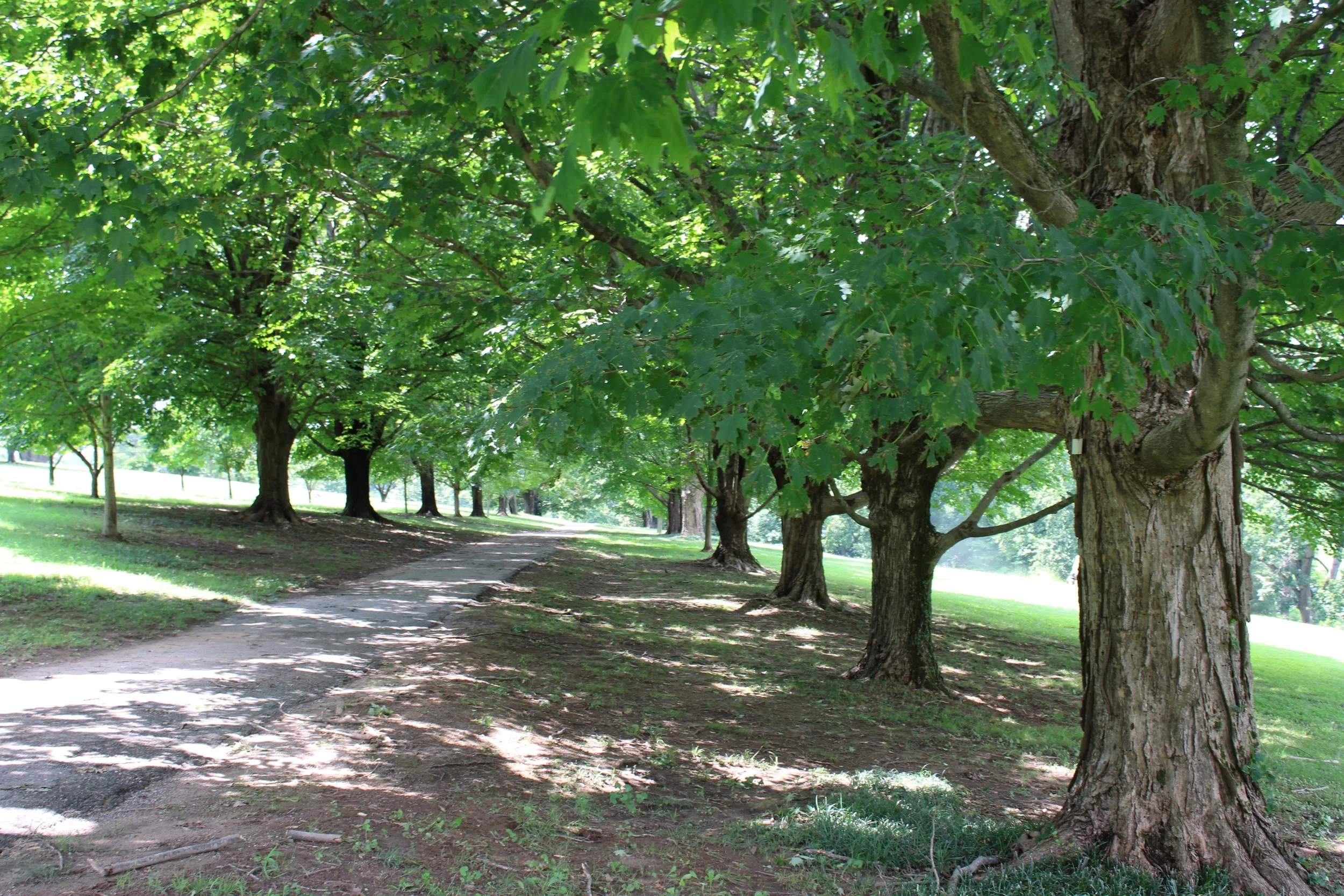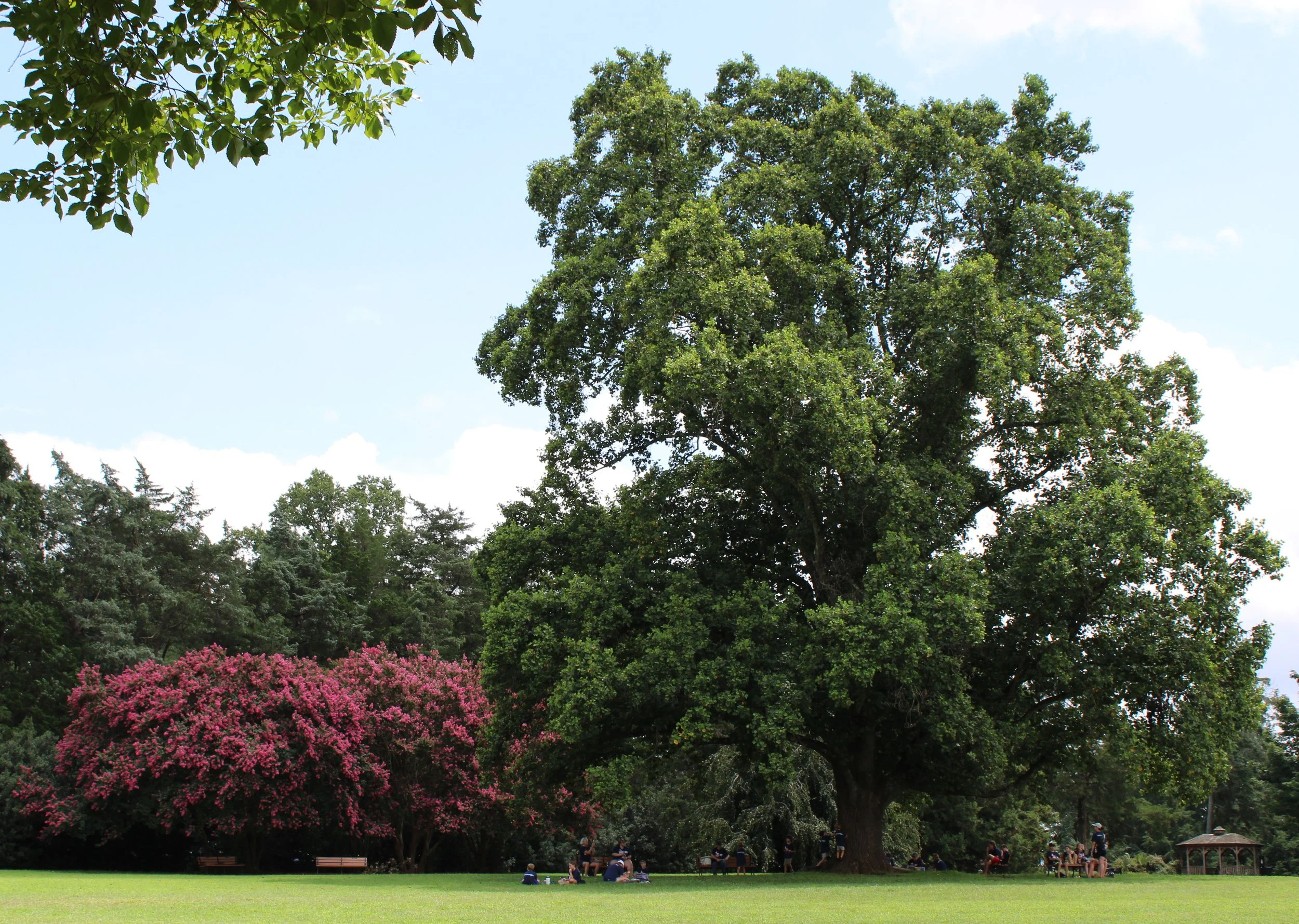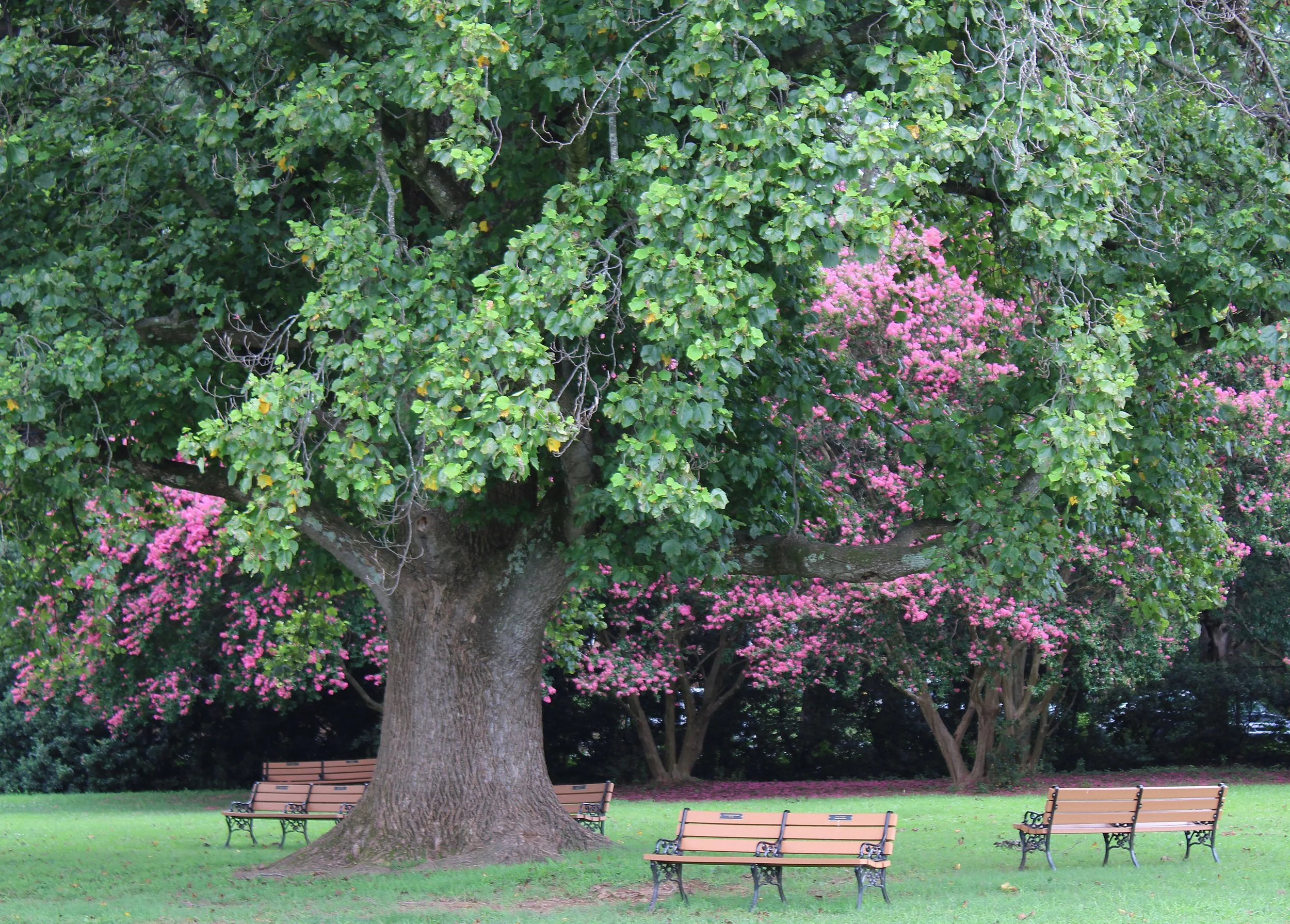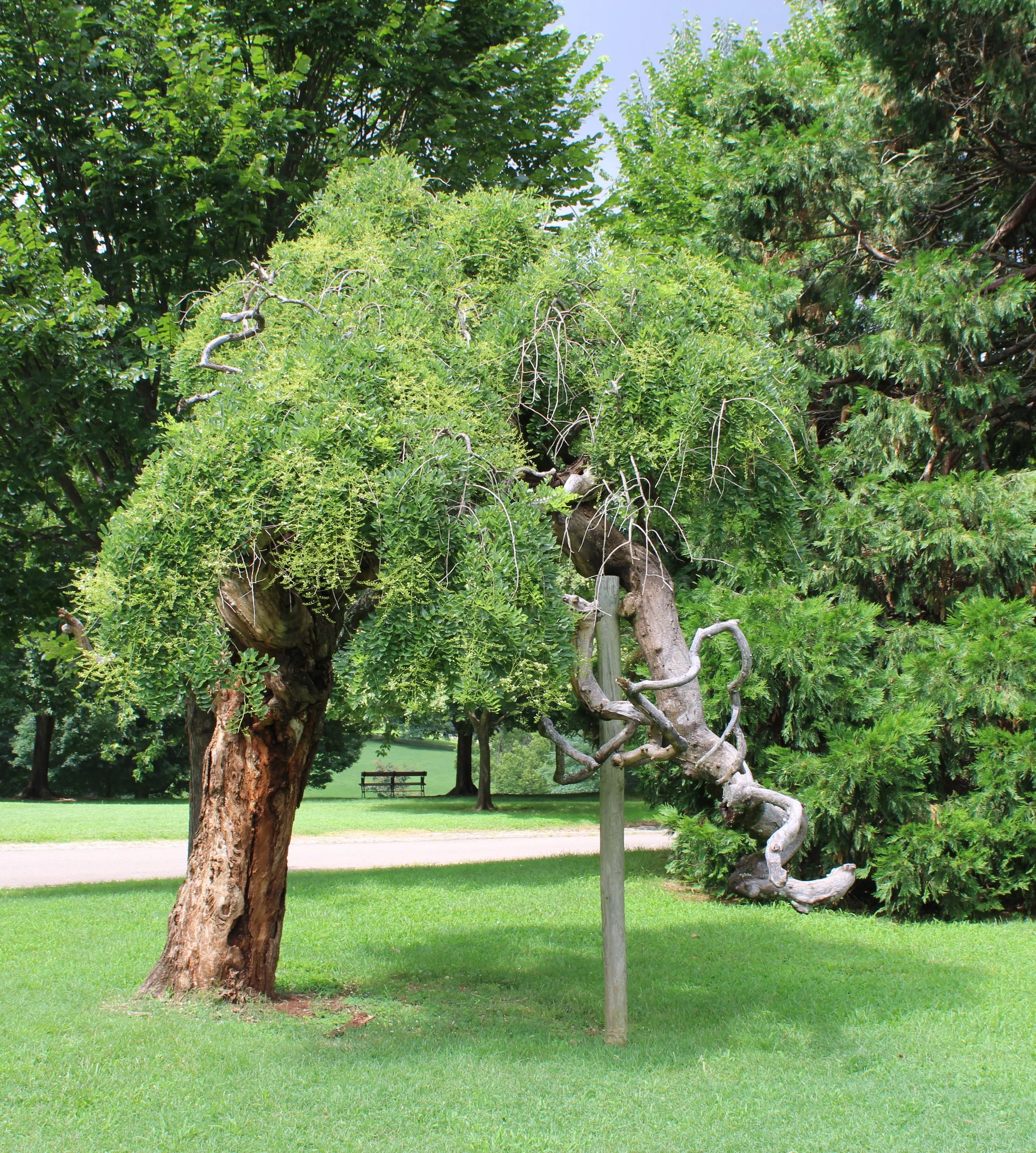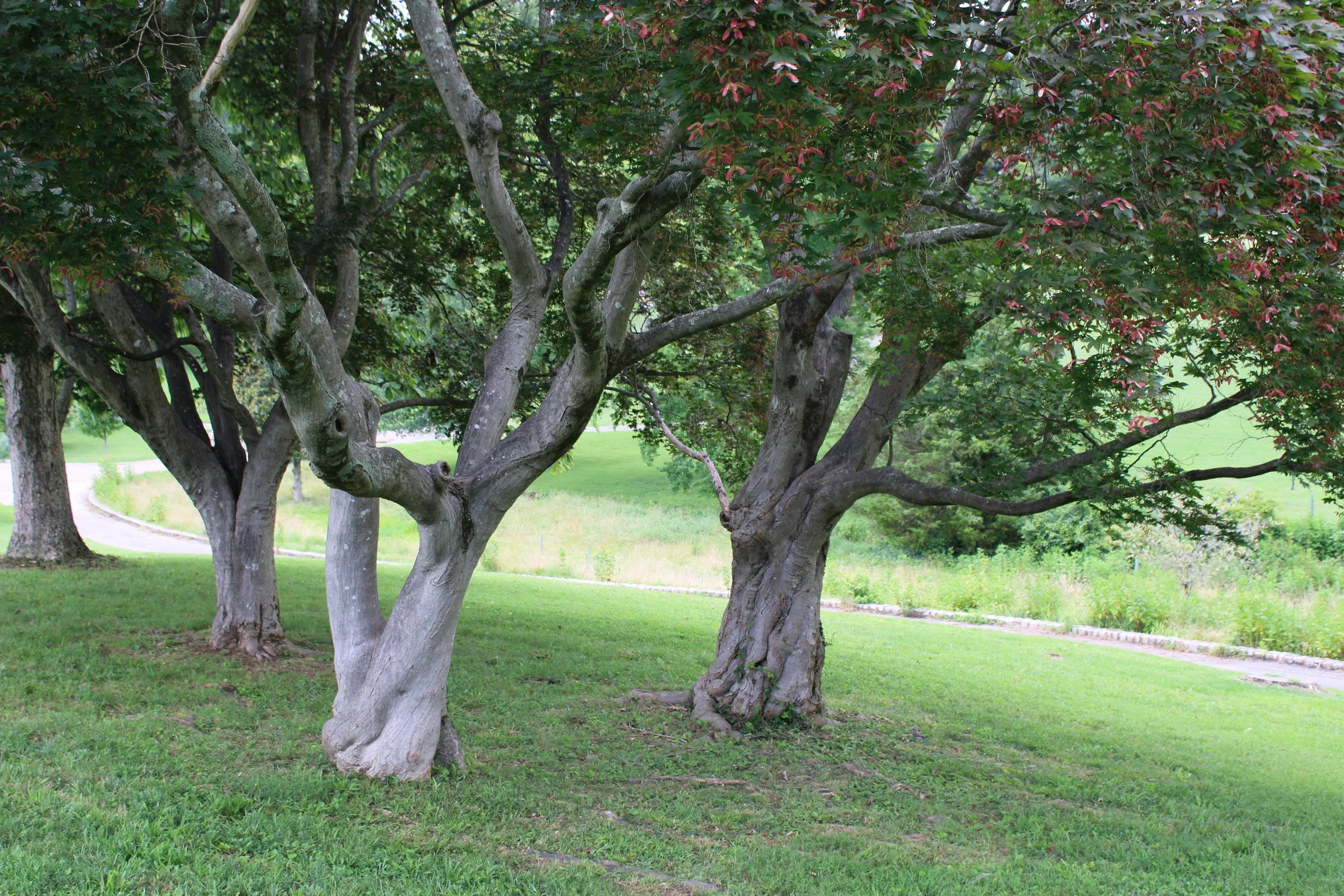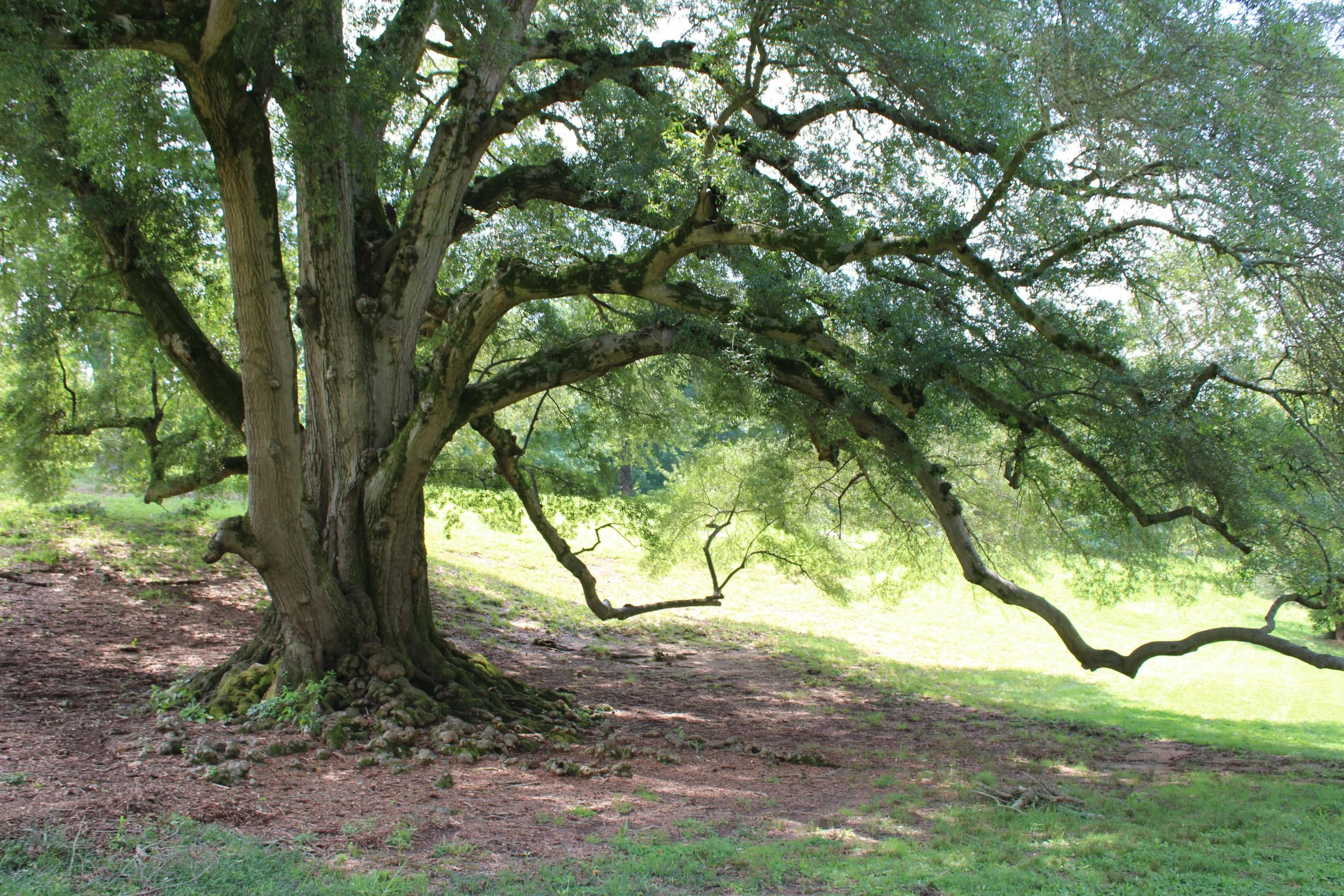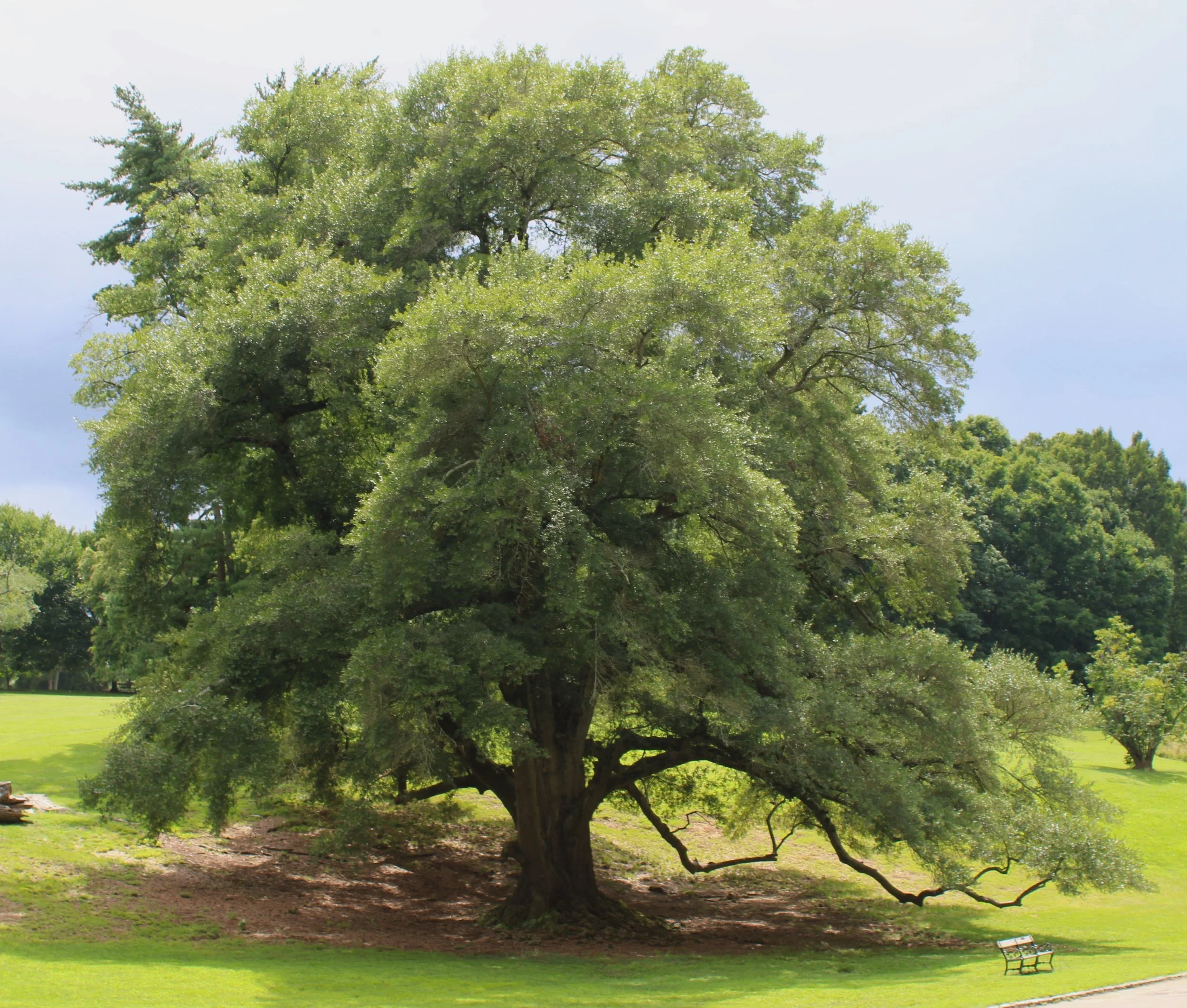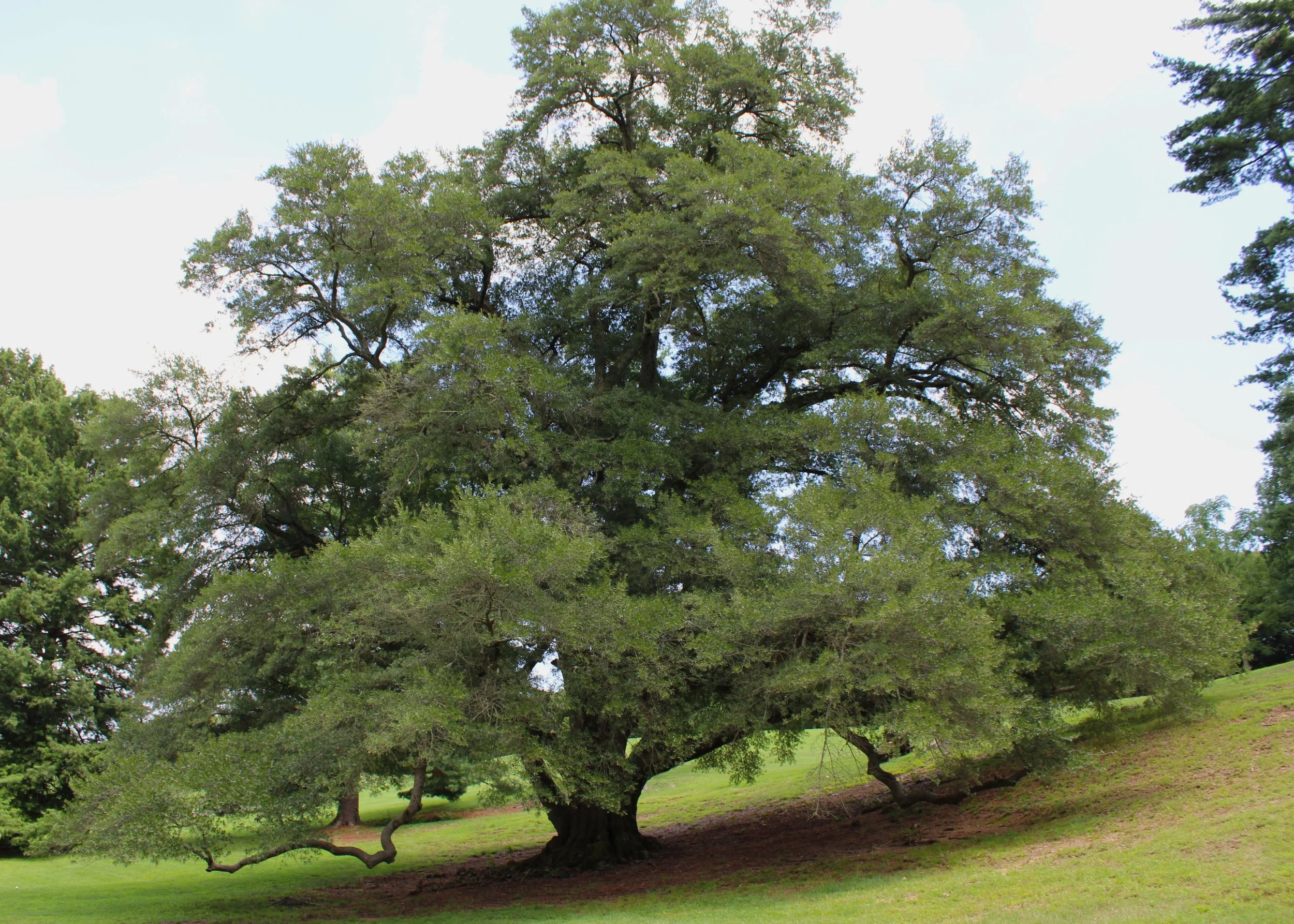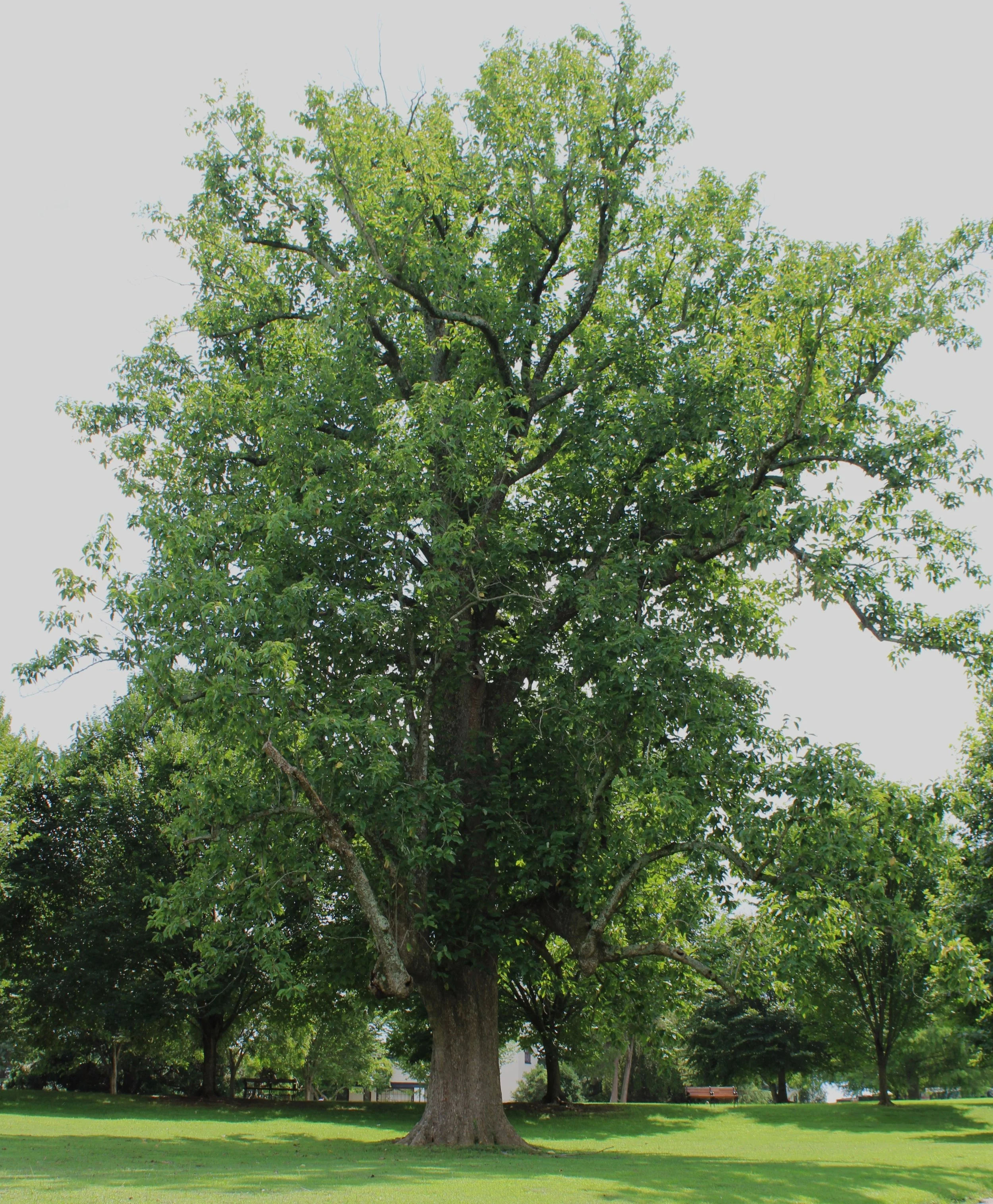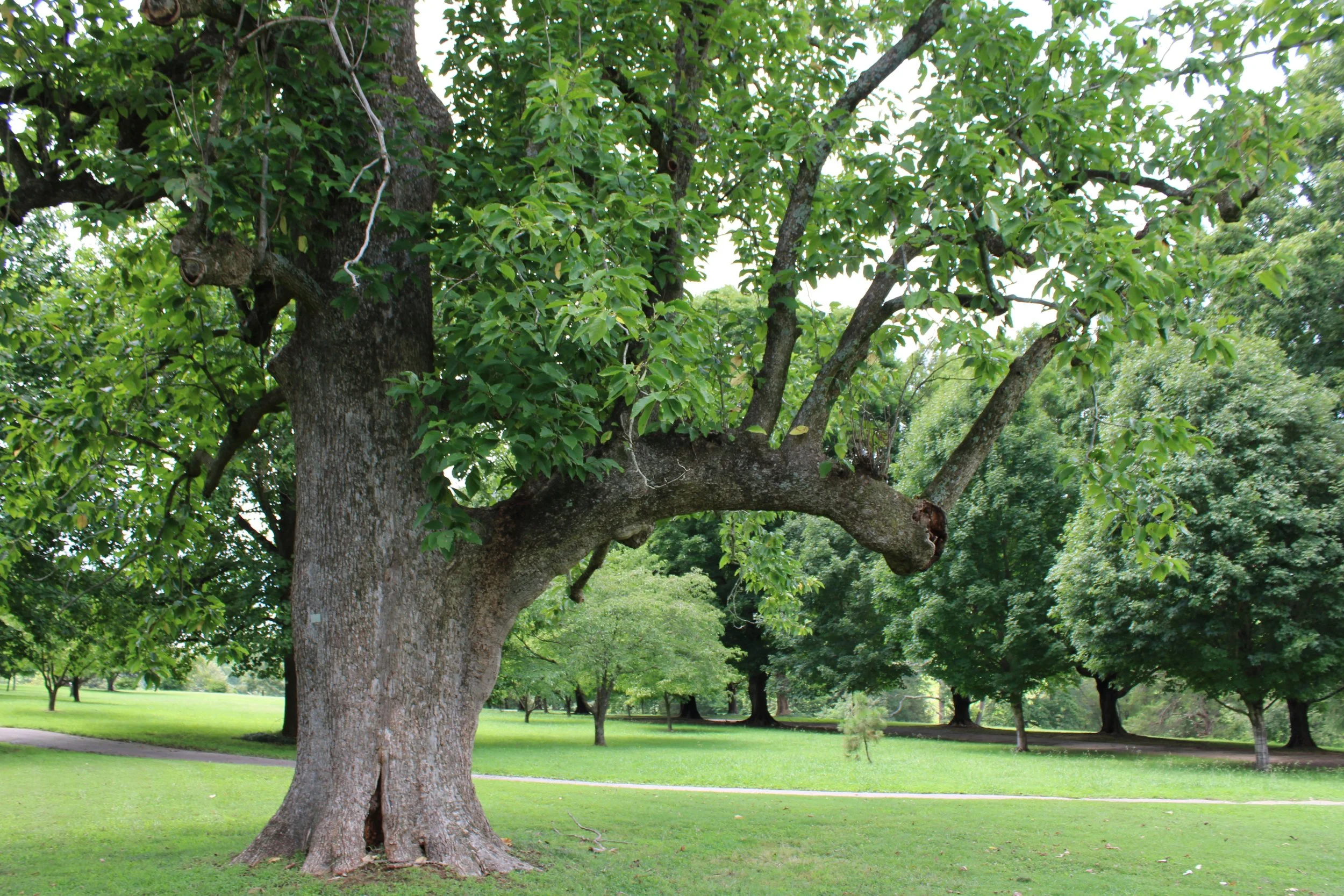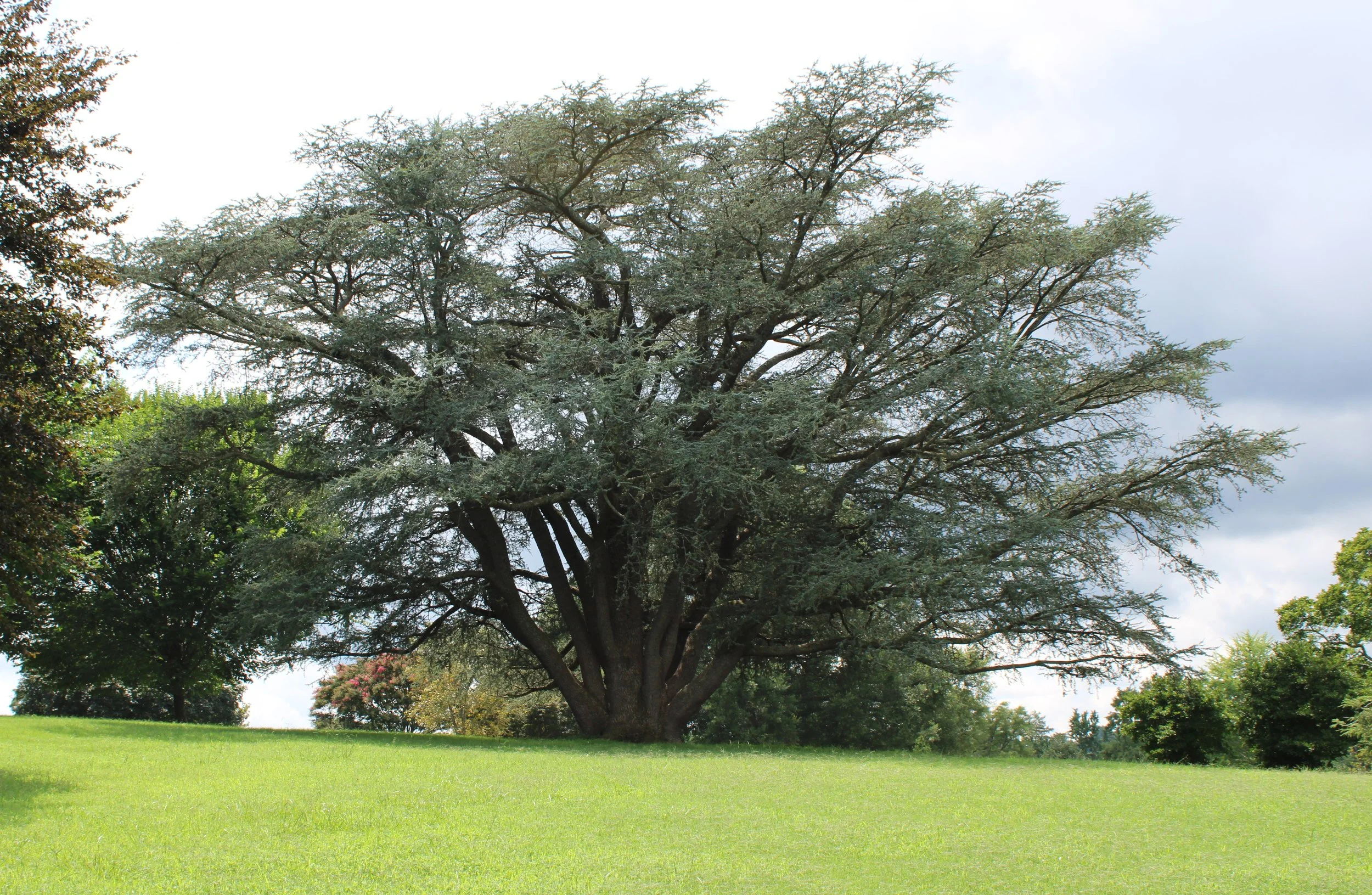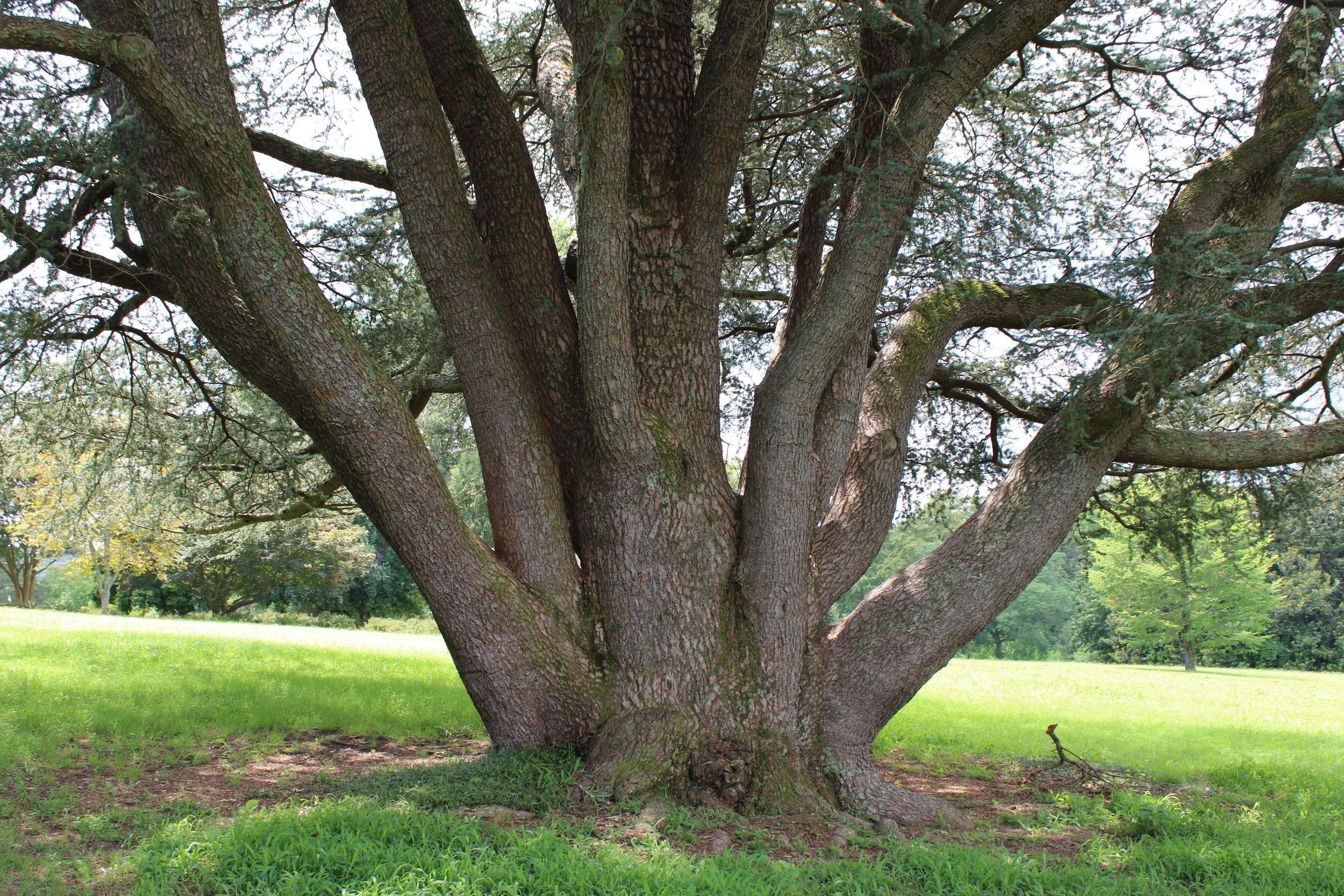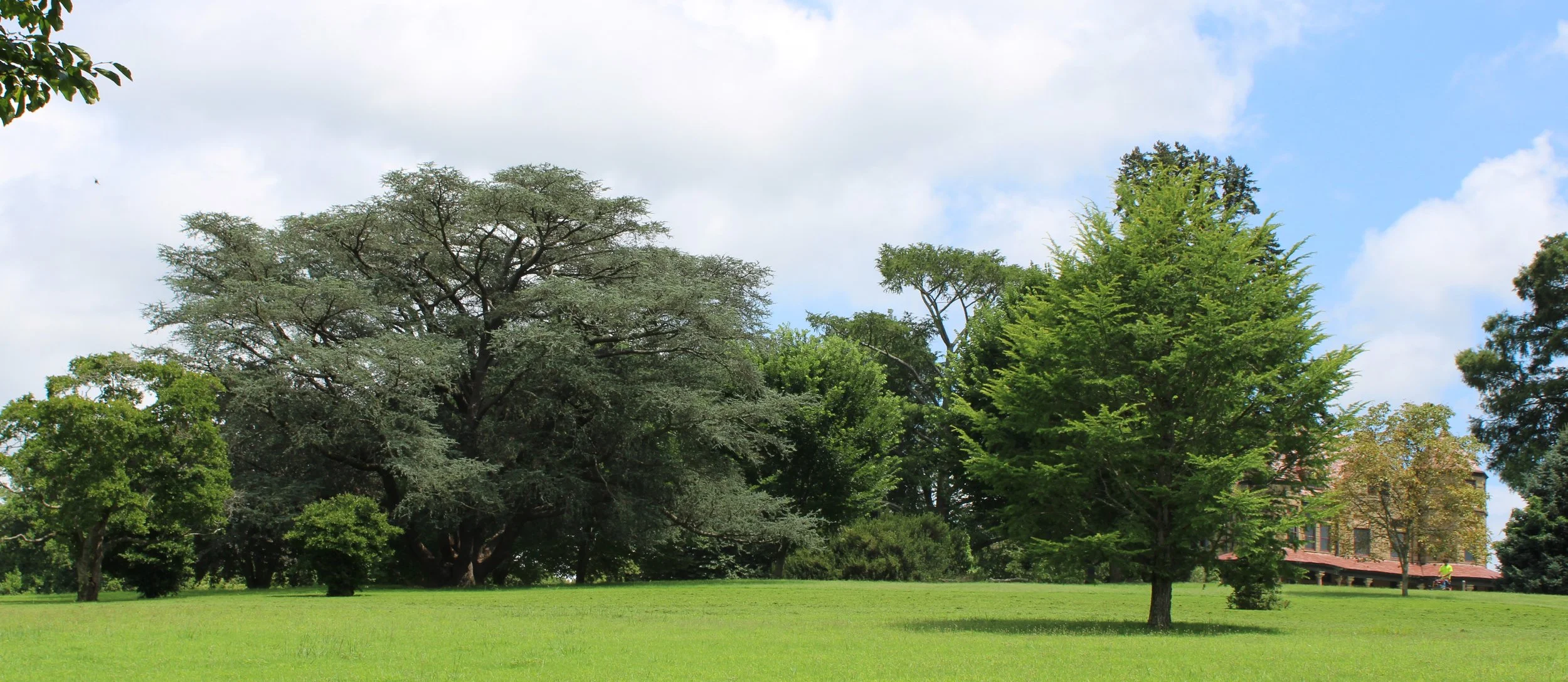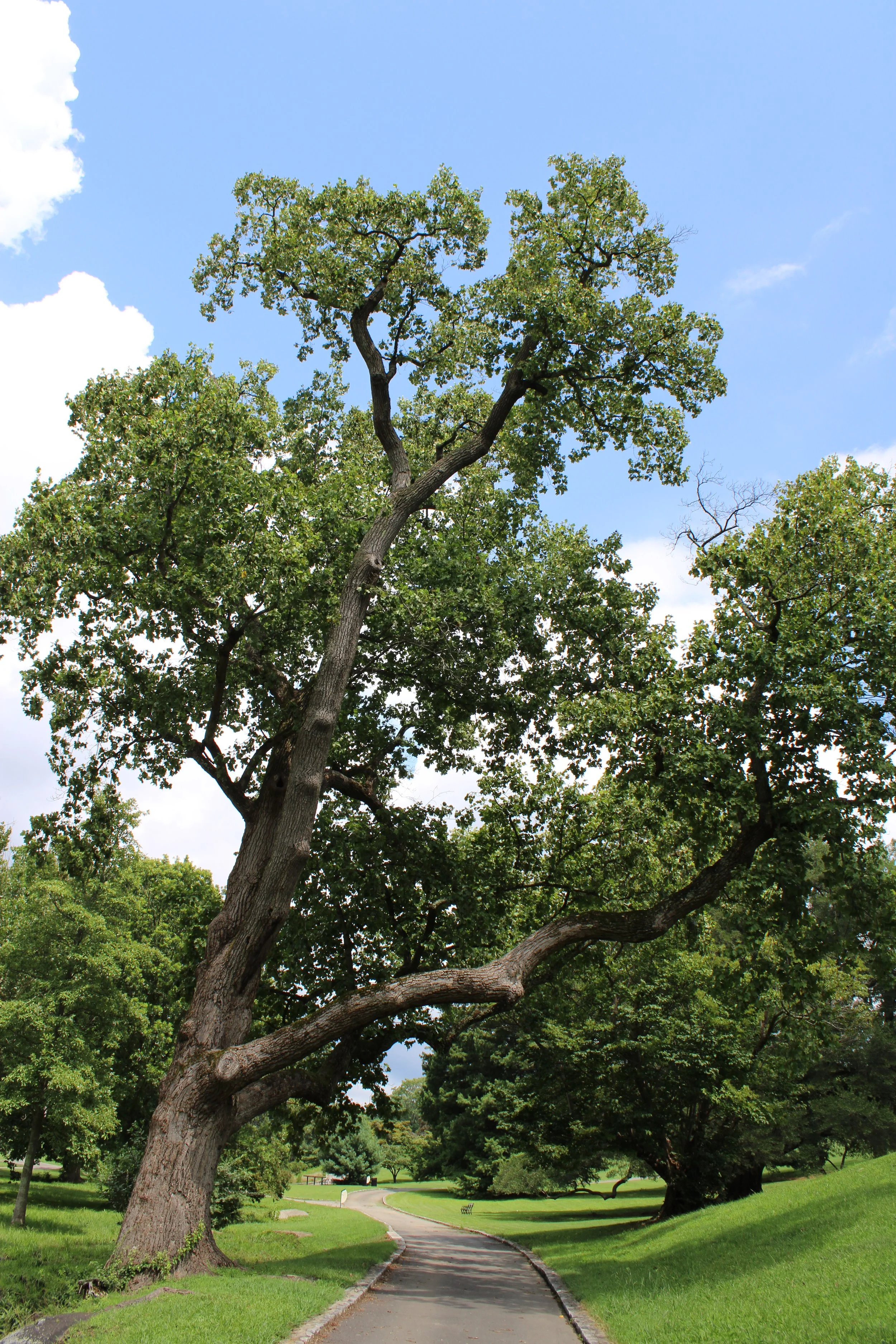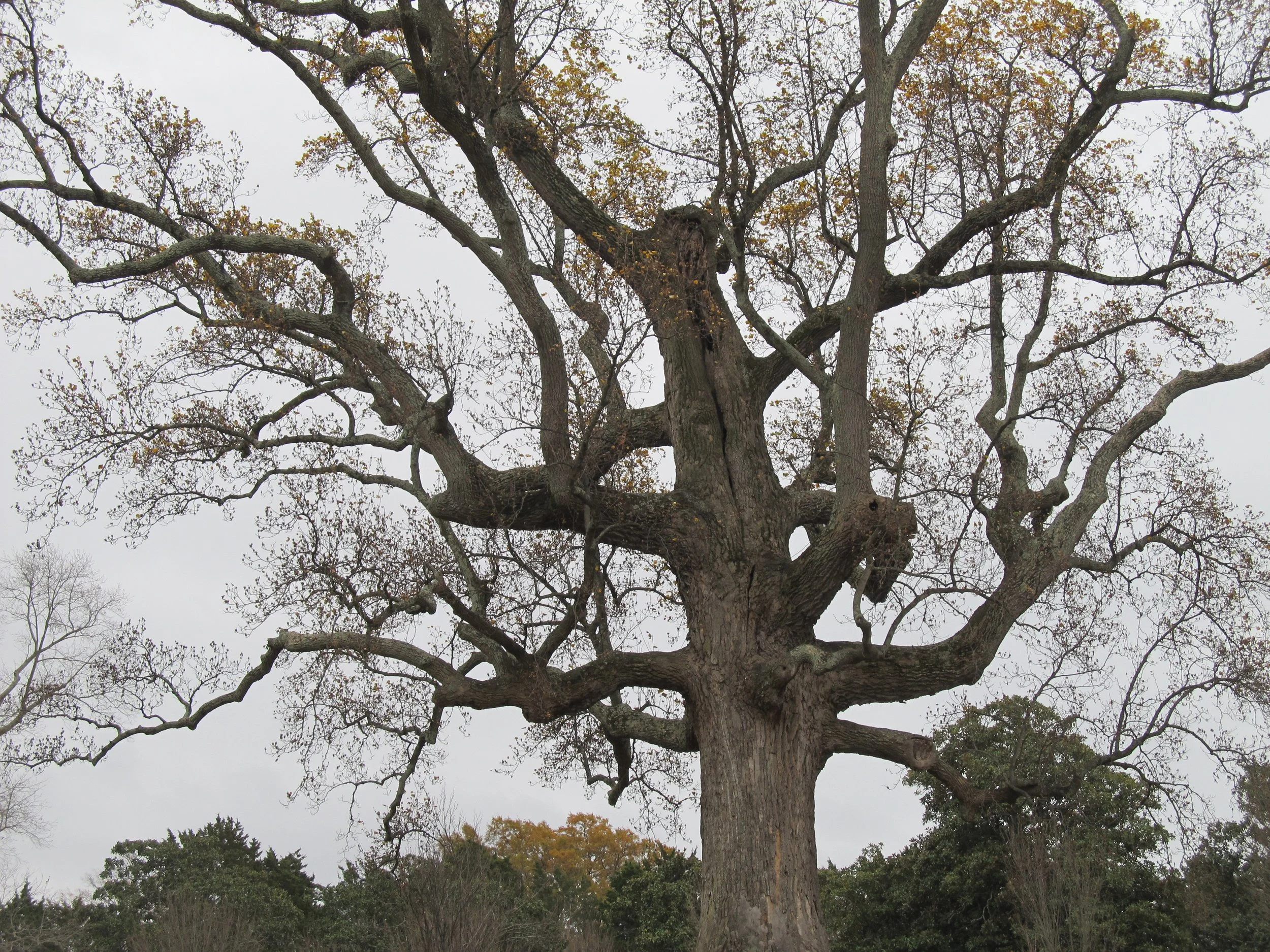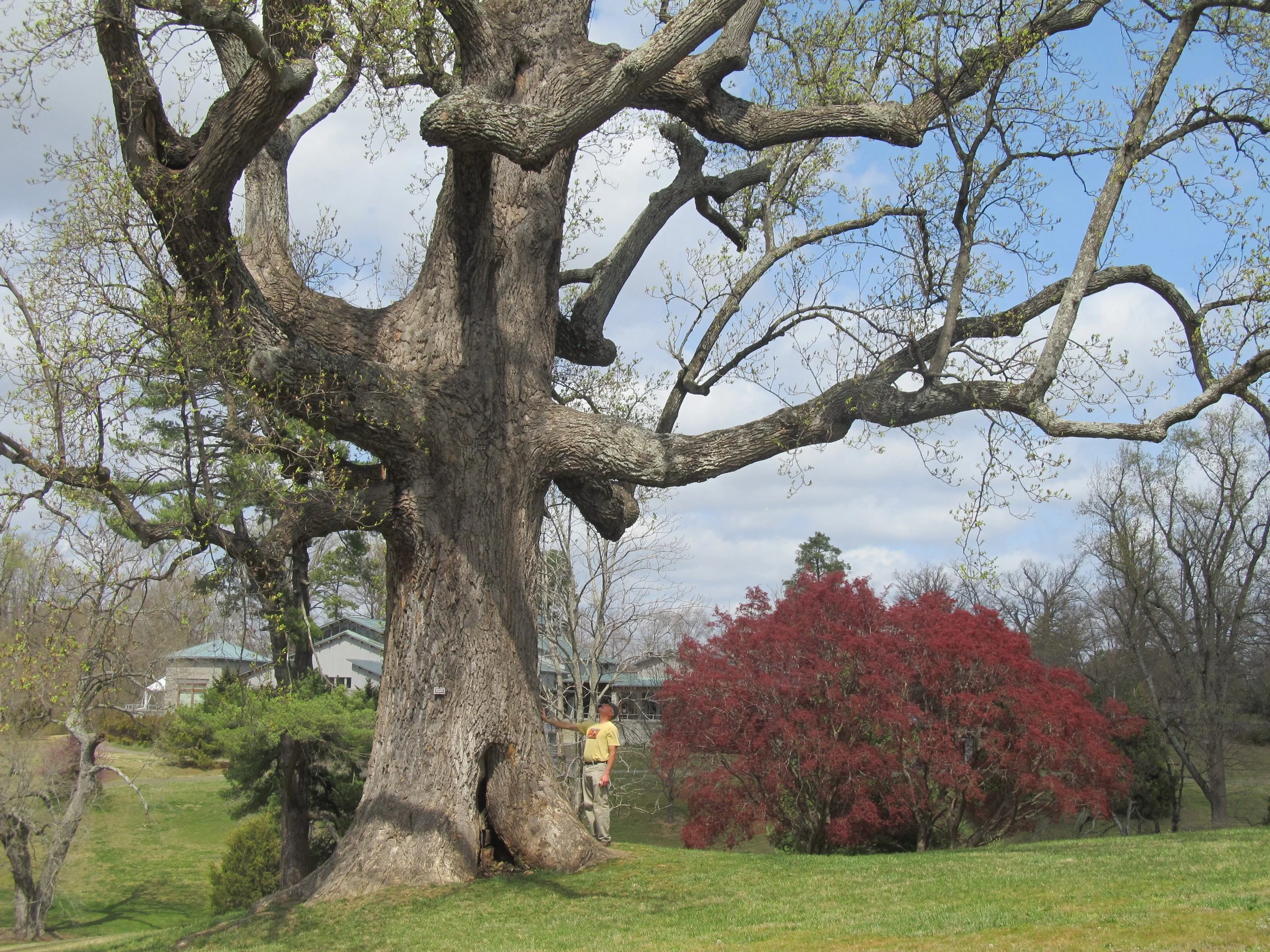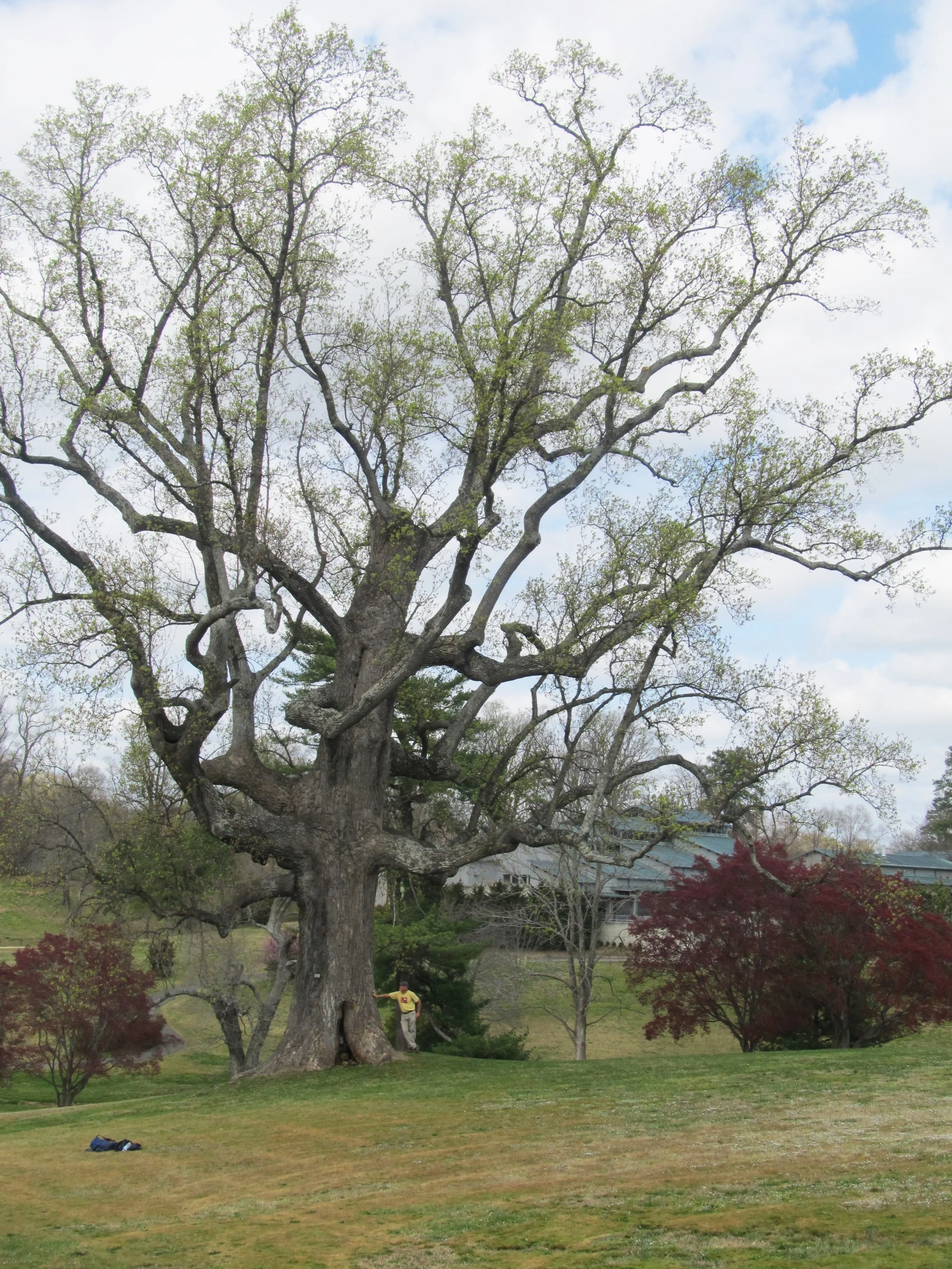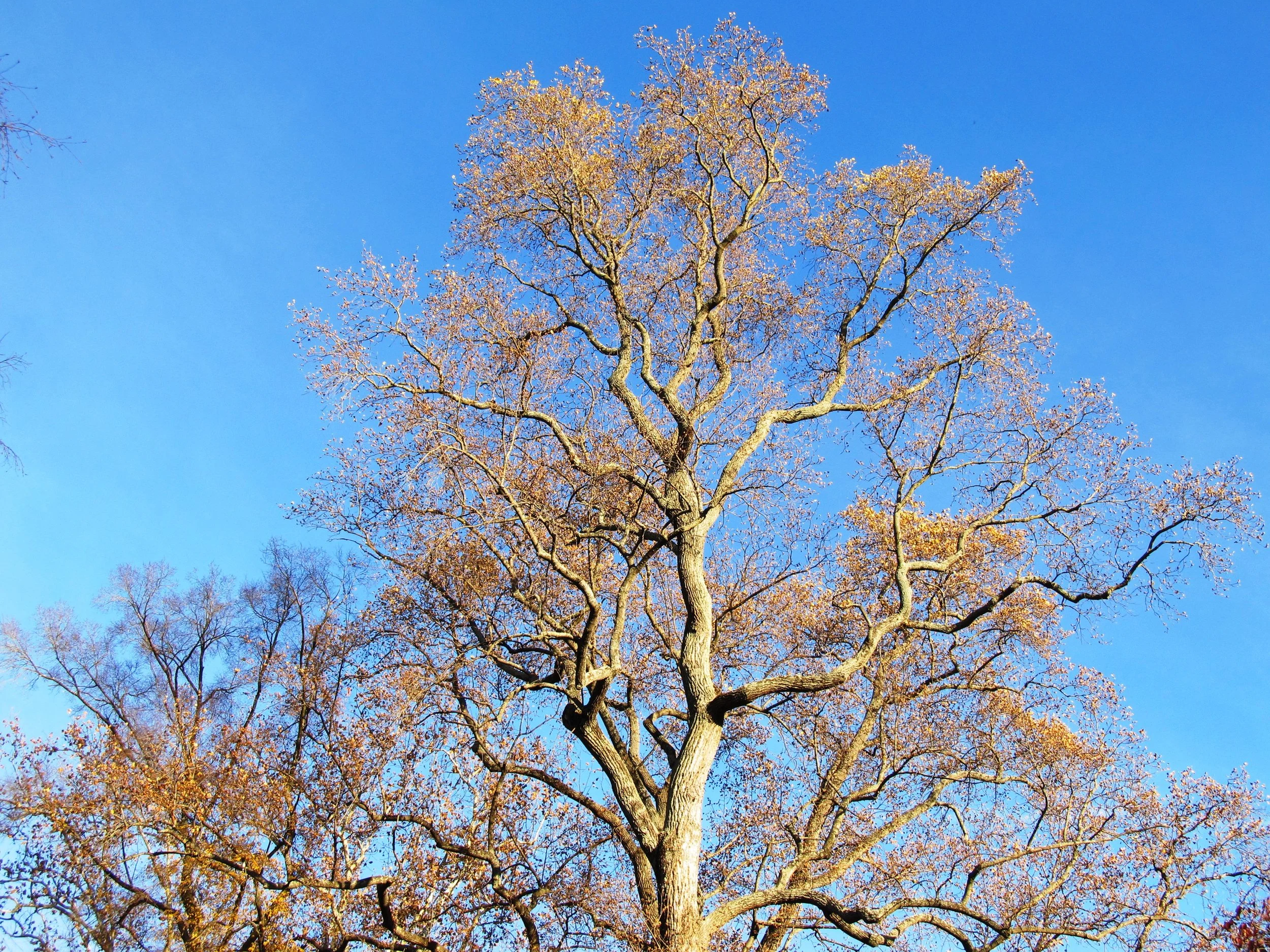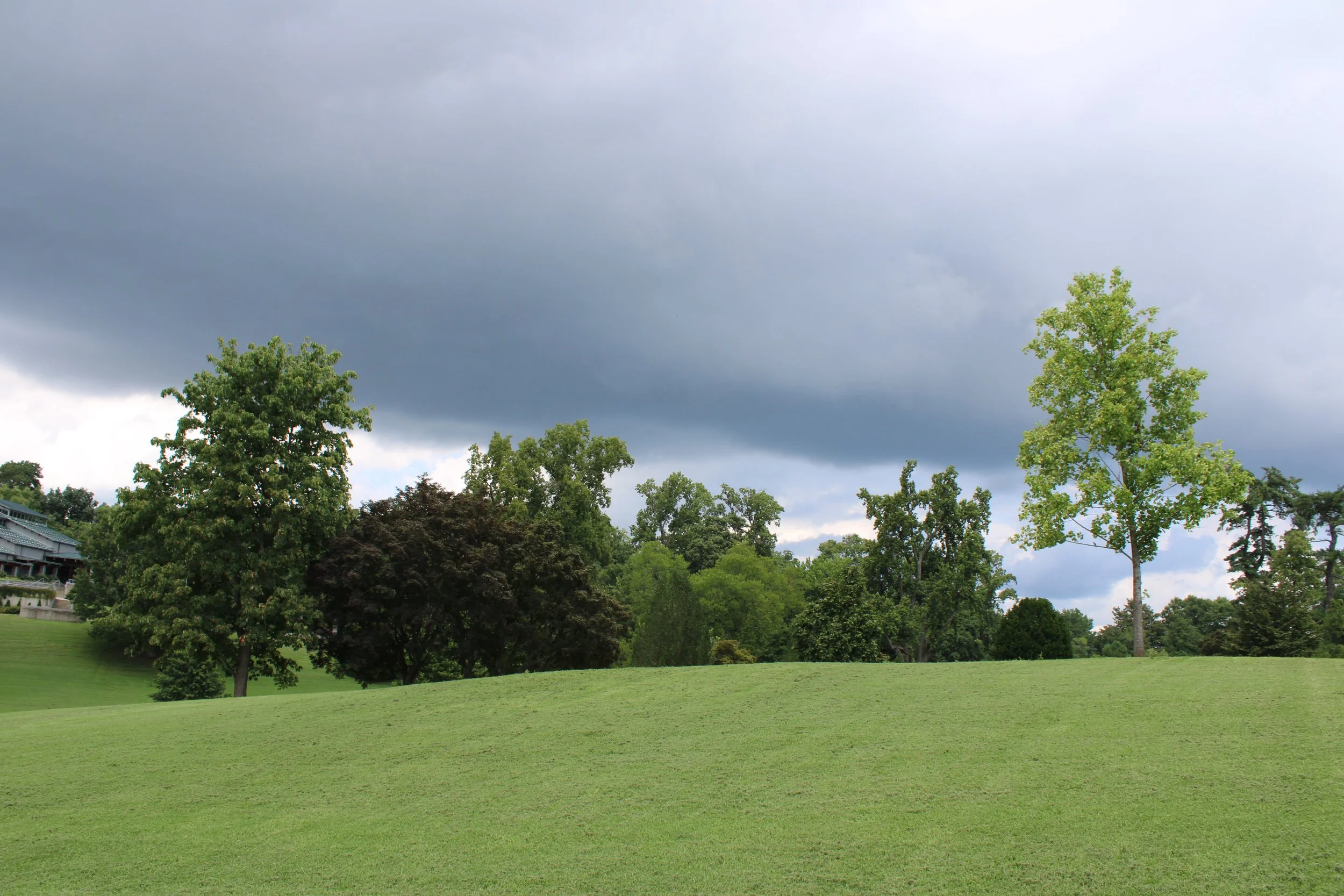Maymont
In the fine old city of Richmond, Virginia, there is a free public park featuring a notable selection of trees matured to an age of a century or more. The name of the park is Maymont. Originally the property belonged to a wealthy couple who were attracted by the beauty of the land, which was on a hill overlooking the James River. There, at the end of the nineteenth century, this couple built an opulent house and started planting trees and making gardens. Their Gilded Age estate was bequeathed to the city of Richmond upon the couple’s death in the 1920s. Last week I was traveling and happened to be passing nearby, so I stopped by to visit, wanting to stretch my legs and check in on the old trees.
I had been to Maymont only three times in total and it had been eight years since my last visit, yet the place remained remarkably familiar. It didn’t take long to come across a tree I remembered well:
This gnarly old specimen is a red maple (Acer rubrum). Here is a view of it from the other side:
This tree exemplifies a particular structural truth about the growth habit of all trees — they are constantly adjusting themselves in relation to the sun. As a tree grows, it extends its limbs upwards towards its source of life-giving energy. Over time, the weight of an extending limb succumbs to the pull of gravity and begins to droop or sag. This is why bonsai growers wire branches on their little trees and reflexively bend them downwards, intending to mimic the effects of aging. But the reality of tree growth is not so simple:
The physical trait this specimen demonstrates so well is not easy to see in a photograph made when the tree is in leaf and bright sunshine creates high contrast between areas of light and shadow. Here is a photo of the same tree made from nearly the same angle on an occasion when the maple was bare of leaves and the sky was overcast:
The tree growth phenomenon in question is observable throughout the structure of this maple, but is particularly easy to see in the area on the left side of the image:
The long, arching limb on the left at one time when the tree was younger undoubtedly followed a more upward trajectory. Over time the limb began to bend under its own weight. Secondary limbs — those smaller branches coming off of the big limb — began adjusting themselves in accordance with their slowly shifting relationship to the sun. Secondary branches that found themselves in an increasingly disadvantaged position weakened and eventually died out. Those branches that found themselves in an ever more advantaged position took off and grew more strongly. The end result is that these better positioned secondary branches began behaving and appearing as little trees in their own right. It takes many years for this to happen. This phenomenon is observable on some younger trees to a lesser extent, but it can become quite pronounced in older trees and is easily seen on this red maple:
There is a road at Maymont that I think used to be the main approach to the big house. Lined along one side of the road is an allee of southern magnolias (Magnolia grandiflora), likely dating back to the late 1800s or early 1900s:
Each tree in this allee has its own personality. They all feature long, sinuous branches and pronounced bases with big surface roots, and many have holes where branches were long ago lost:
Elsewhere on the estate is another allee, this one featuring sugar maples (Acer saccharum). These trees do not appear to be particularly old, but they are mature and well developed:
I was reminded while strolling under the dappled shade of these maples what a pleasing effect an established allee creates. They require a lot of land, however, and decades to reach their full potential. The play of light and shadow under a canopy of sugar maple leaves is a soothing sight on a summer day:
Maymont is a public space, well loved by the people of Richmond. There were many there the day I visited, doing what people do when they visit a city park to spend time out in nature. The image below shows an immense tuliptree (Liriodendron tulipifera) with many people gathered beneath it to partake of its shade:
Here is a closeup of the lower portion of the tuliptree, with the bright flowers of a nearby crapemyrtles (Lagerstroemia indica) showing through:
While many of the trees on the Maymont property are native to the region, there are also many exotic species to be seen. Here is a weeping Chinese scholar-tree (Styphonolobium japonicum ‘Pendula’) planted nearby the big house:
This specimen is likely around one hundred years old. These trees are a dwarf form and grow very slowly, and are most impressive when seen bare of foliage:
There are numerous Japanese maples (Acer palmatum) planted at Maymont, including this group of three elders:
Willow oak (Quercus phellos) is a common Piedmont species in the Southeast, and Maymont features a spectacular, multi-trunked specimen:
When looking at a photograph, it can be difficult to appreciate the size of a tree without having some reference point for scale. In the image below, take note of the park bench sitting nearby:
A view of the same tree from a different angle:
A closeup view of the base:
Another gigantic specimen of a native tree species — cucumber magnolia (Magnolia acuminata):
One aspect of Maymont that makes it a particularly good place to study trees is that many of the specimens were planted out in the open with plenty of room to grow. This was apparently done with intention, with the long-range purpose of creating great specimens for the enjoyment of generations yet unborn. To be aware of this is to appreciate the foresight of the original property owners.
This next image, still of the same cucumber magnolia, demonstrates again the principle of tree growth orienting itself to the sun. In this instance, the original limb, quite low down on the tree, grew so large it eventually broke. Several secondary limbs remained on the stump of the original limb, and now these carry on the life of the original limb while growing upwards and behaving as if they were individual trees:
I have incorporated this look in several of the Arboretum’s bonsai because its authenticity is appealing to me. It is not, however, a generally favored feature in classical bonsai styling.
The next photo shows an Atlas cedar (Cedrus atlantica), a species native to the Atlas mountains in Morocco:
This cedar is another specimen in the one hundred year range, and also features multiple trunks. Growing in the open field with room to spread out seems to be conducive to producing multi-trunk trees. What follows are two images of the lower portion of the cedar, and it should be taken into account that each trunk could stand independently as a sizable tree in its own right:
Here is a view of the tree in the context of its surroundings. The cedar is on the left, while a portion of the big house is visible on the far right:
Here is another tuliptree, arching over an eight-foot wide path:
Take note of the shape of the tree in the above image. It leans to one side, suggesting that once there was another large tree growing close by from which it was necessary to distance in order to attain more light. This specimen has lost many limbs over the years, as evidenced by the numerous bumps visible on the ascending trunk in the foreground. The apex of the crown is sparse when seen from this angle, formed by a bifurcation high up in the line of the ascending trunk. Seen from another angle the top of the crown looks more full — the appearance of any given thing varies depending on perspective. The two large, lower branches move away from the trunk at an angle of approximately forty five degrees, reaching out to hold their foliage from beneath the shade of the tree top. On the periphery of these extending lower branches, once they are clear of the shade, the branches angle in a more upwards fashion. This structure illustrates yet again that all parts of a tree orient themselves to sunlight. Once the branches are clear of the shadow they turn upwards to where the sun is.
Observations such as these are critical to naturalistic bonsai styling. Naturalistic bonsai requires the study of trees in nature, with an eye toward truly seeing what trees do and understanding why they do it. That is the big attraction for me in coming to a place like Maymont. Here there are genuinely old trees (as per my own definition) of different species, growing out in the open where they can fully express themselves while being viewable from all angles, near and far.
There was one particular tree at Maymont I most particularly wanted to see again, and it, too, was another tuliptree.
The first time I visited Maymont I came on the recommendation of members of the Richmond Bonsai Society. I did a program for them in November of 2016 and happened to ask if there were any good places in the city for seeing big trees. I was told there were two places I needed to check out, one being Hollywood Cemetery and the other was Maymont Park. The next day before departing for home I went and visited both. I went to the cemetery first and found it to be virtually an arboretum with a lot of headstones. The trees at Hollywood were fabulous with many outstanding old specimens, and maybe someday I’ll go back and write about it. I spent more time than expected at the cemetery and still had a six hour drive to make back home, but I headed across town to have a quick look at Maymont before going on my way. I might have gone to Maymont first if I had known what I’d find. Time was short and I was obliged to walk quickly because the park covers one hundred acres and features many attractions beyond the old trees and big house. As I was winding down my visit and making my way back to the parking lot, I came across a sight that stopped me in my tracks. In this place of so many great old trees, I came across the granddaddy of them all. It was a gigantic tuliptree. But it wasn’t just the size of this tree, it was the shape of it, the character of it. This tree had presence and personality, and the experience of seeing it for the first time felt like I was meeting a famous person from history. I took out my camera and made a picture of this craggy giant:
Then I walked closer and closer to the tree, snapping photos as I went:
I walked around the tree numerous times, observing it closely, standing at its base and craning my neck upwards trying to see the top, looking into a vertical hole in the bottom of its apparently hollow trunk, then walking away a distance to see it in its entirety again from a different perspective. I took a few more shots:
And then it was time to go. I didn’t want to go, but between the visit to the cemetery and then to Maymont I had burned up most of the day and now it was time to leave. I moved away reluctantly, heading to the parking lot, casting several looks back over my shoulder to see the great old tuliptree one more time, diminishing in size as it receded in the distance, yet still dominating the landscape. I knew there and then I had to come back.
I did go back, too, and I didn’t wait long to do it. In March of 2017 I made a return visit to Maymont with my son and headed strait for the magnificent old tuliptree. It was a beautiful spring day and new leaves were just starting to emerge. There was the tree, just as I remembered it:
Once again I walked all around the tree, studying it, snapping photos from various vantage points. I gave my son my camera and asked him to take a few pictures with me standing next to the great old soldier:
My son and I spent several hours at Maymont, taking in its many sights, exploring corners of the park I hadn’t made it to on my first visit. Toward the end of day as the sun was starting to descend, we swung back around to the big tuliptree for one more look. I took a few more shots, savoring the play of warm light and dark shadow, throwing the contours of trunk and branching into stark relief as the setting sun strafed the tree with its late afternoon rays:
When I returned to Maymont earlier this week I was once more on a tight schedule. I checked in on many favorite trees remembered from previous visits and saved my reunion with the heroic old tuliptree for the end. It was a hot day — ninety degrees, muggy, with a merciless sun beating down early on before ominous storm clouds began moving in. I headed for where I knew the tree to be. I didn’t see it.
This was bothersome. My last visit was in 2017 and that was a while ago, but still, I thought I knew where I was going. I circled around a bit. I was seeing other trees I thought I remembered to be in close proximity to the big tuliptree but the big tree was nowhere in sight. I was tired and hot, soaked through with sweat for all the walking I had done, and I was getting annoyed. Well, where did the tree go? How could something that big disappear? I must be misremembering. I walked to the top of a nearby hill and surveyed the rolling landscape around me, looking for the massive crown of the old giant. Nothing. I walked back to where I thought the tree should be, retracing my steps and looking everywhere. Now I began to suspect the worst, and instead of looking for a big tree I started looking for the remains of one. I felt certain that if something had happened to compromise the tuliptree, the people at Maymont would have worked to preserve whatever was left of it. And if the tree had maybe gotten diseased and needed to be cut down, there would be one massive stump still remaining where the giant once stood. Nothing.
I began to have doubts about the clarity of my thinking. I was overheated and it occurred to me that I hadn’t had a drink in a couple of hours and the sweat was pouring off me, so maybe I was dehydrated. I started to get panicky. What was happening? I made a beeline to the visitor center. Behind an information desk sat three women, either Maymont employees or volunteers, who looked up at me with some apprehension as I approached. I’m sure I looked a sight. “Yes?” one of them said pleasantly, “can we help you?” “I came to see the big tuliptree,” I said, “you know, the great big one,” and I held my arms out wide in approximation of the trunk’s girth. “The tulip tree?” said one of the women as she raised her eyebrows doubtfully. “Yeah, the tuliptree,” I said, “the great big old tree that was on the cover of that book!” “What book?” said the woman. “The book about remarkable trees of Virginia,” I said, “I think that was the title of the book and it had a picture on its cover of a little boy playing next to this gigantic tree and the tree was from here.” The women looked at each other and none of them knew what I was talking about. Just then another employee happened by, more of a management type by the look of her, and one of the women I was talking to asked if she knew anything about a big old tulip tree. “Tulip tree?” the management woman said, “do you mean a tulip poplar?” “Yes,” I said, suppressing the urge to tell her that tuliptree is the more correct name because tuliptrees are not poplars. Common names are so misleading! I went through the whole description again, including the part about the picture on the book cover. “Mmmm…” said the management woman, “I don’t know about that. I’ll see if I can find out.” She walked away for a minute and I went on talking to the other three, describing the big tree and how it wasn’t where I thought it should be. The management woman came back, holding a little hand-out map of Maymont. “Yes,” she said, “It’s still here. It’s on the map,” and she pointed at the place on the map where it said “Tulip Poplar”.
I thanked her, took the map and headed back out into the heat. Following the map took me right to the place where I thought the tree should have been in the first place. Nothing. I looked all around. Everything else was in place, but there was no big old tuliptree. That sealed it — the tree was gone, and without a trace. There was no stump, no depression in the ground, no sign saying “Here once stood a magnificent tree”. Nothing.
I headed for the parking lot, got back in the car and drove home. Later, I learned from the Internet what happened to the tuliptree. One night in 2021, following a period of heavy rain, the great old giant fell. The ground was saturated, the tree was compromised because it was hollow, and it just toppled over. There was nothing to save. In four years time whatever telltale signs that might have remained were all wiped away.
The tuliptree was there before Maymont became Maymont, before the big house was built. Estimates put the age of the tree at one hundred fifty years, although it could easily have been more than that. All that time standing right there as the stream of life went flowing by. People lived and died, the property overlooking the river was sold, the big house was built, the owners lived in it for many years before they died too and left the property to the city of Richmond for a park. Generations of people came to the park and discovered the tree. They sat in its shade, rested and picnicked beneath its boughs, were married next to it and brought their children to play under it. The tree stood there in its place as days and nights went by and seasons passed. The sun shone on it and snow rested on its branches and storms raged around it. Lightning struck it at least once, and pieces of it were ripped away by lashing winds, but still the tree stood and lived and bore witness to the passage of time. Then one day time came to an end. The remains of the big tree were carved up with chainsaws, processed through a chipper, hauled off in a dump truck. People mourned the big tree’s loss and that was it.
Four years later an old man who didn’t know what had happened came by to see the old tree and he couldn’t find it. He walked around in frantic circles in the sweltering heat of a July day and couldn’t find a sign of that tree ever existing.
All things pass. Then those things live on in memory, but those who hold the memories eventually pass, too. Then what remains?
Nothing.
I took this picture of the place where I thought the great old tuliptree should have been, before I learned of its fate. Only later did I notice the young tree, a new planting, standing on the right hand side of this image. It’s a tuliptree.
